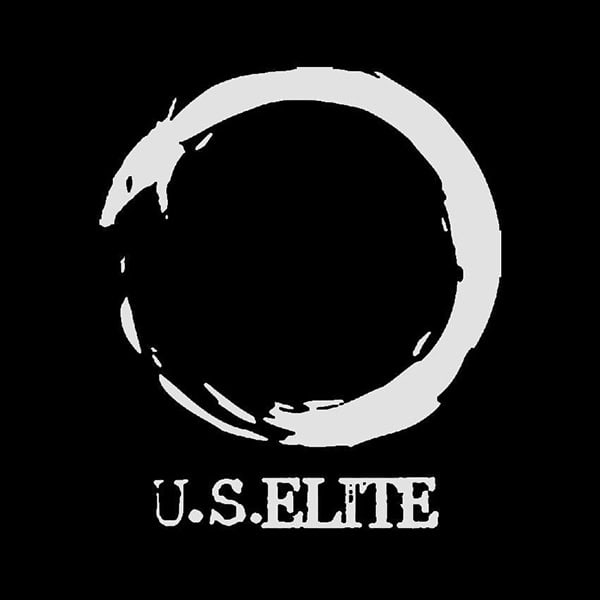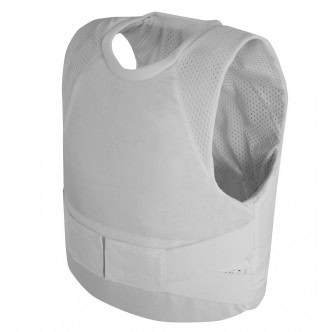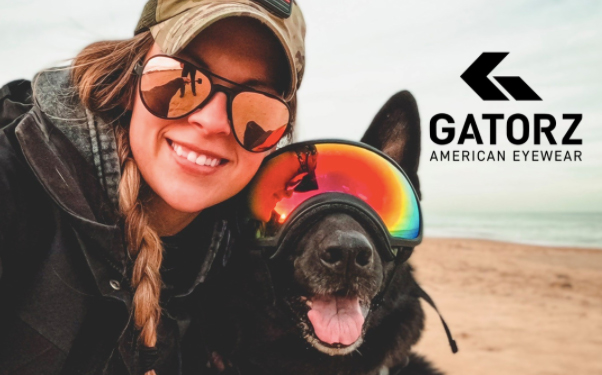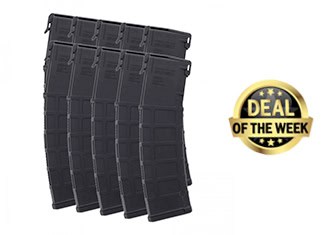TAG Precision—American-made RMR Plate for Kimber
For users of optics-ready Kimber 1911 and 2K11 pistols, TAG Precision has announced…
For users of optics-ready Kimber 1911 and 2K11 pistols, TAG Precision has announced…
Fountain Valley, CA—SureFire, LLC, manufacturer of the world’s finest—and most innovative—illumination tools and…
Shinenyx—creators of a cutting-edge fusion of digital night vision and thermal imaging technology—has…
All shooting is a balance between speed and precision. By that I mean you can…
The Mod-Navy Qual I’ve been doing this qual (or drill, or whatever the current nom…
• Built for road trips and off-road use• Manual transmission equipped• Wrapped in MultiCam Arctic…
[dcs_img_center desc=”Photo: Despite two recalls in 2012, Caracal pistols remain in high demand.”
framed=”no” w=”600″ h=”270″]
http://gunsandtactics.wpengine.com/wp-content/uploads/2013/04/caracal-600-270.jpg
[/dcs_img_center]
[dcs_post_top]
[dcs_fancy_header color=”#000000″ fweight=”bold”]A closer look at recalls in the firearms industry with expert, Wes Doss[/dcs_fancy_header]
[dcs_thinspliter size=”medium”]
Recall! The single word that strikes fear and acrimonious bitterness in the hearts and minds of consumers, while throwing manufactures into full blinding panic. While this term has become a standard in today’s society, thrown about with the ferocity of a group of teens egging a house on Halloween, the use of recalls to mend shortcomings with faulty products is really less than 100 years old and was brought about because of serious atrocities that occurred in all levels of industry at the time of inception. Take a break from your high speed internet surfing and venture to your local public library and look for a book titled “The Jungle” by Upton Sinclair to get a feel for what life was like not so long ago and when industry existed with little or no accountability. In this book, published in 1906, Sinclair graphically exposes the horrid unsanitary squalid conditions of the U.S. meat packing industry. Considering when the book was written it paints a graphic image that rivals the gore and goo of any modern psycho chainsaw killer movie, easily enough to convince many to become vegetarian.
Product quality and safety are the biggest branding tools available to a manufacture bar none! The power of word of mouth advertising and customer satisfaction is by far more powerful than any other form of marketing, but Internal manufacturing errors, design faults, and malicious tampering mean that instead of emphasizing the strength of the company’s products to customers, the exact opposite occurs, or at least it could. The consequences to a manufacturer for a faulty product can be severe, and to a consumer they can mean both financial loss and physical injury. Despite a company’s best efforts to design, manufacture and sell safe and reliable products, the possibility still exists that dangerously defective products may reach consumers. Now, in years past when a product defect was detected, a manufacturer had to launch an exhaustive campaign to notify consumers and then an equally exhaustive effort to get the defective product back in order to repair or replace it. Today with the immediacy of information and wide spread method of communication afforded by the internet, the task, while still intensive, is simpler, faster and more thorough, but the same benefits also alter the risk landscape greatly.
The immediacy and anonymity of social media often causes a dangerous flip side when things go wrong, the self-anointed authorities of the World Wide Web, who command hordes of sycophantic minions who follow these supercilious prevaricators like lemmings leaping with blind faith to their death, are often at the helm of much of the unrestrained panic created about a faulty product or even the shear rumor of a faulty product, launching spectacular crusades against the manufacturer often before the manufacture has had an opportunity to research the problem and take any corrective action, sometimes even before the manufacture has even been made aware of the problem itself. However, when a well-managed recall is put forth by a responsible manufacture the effects can be the opposite and although the manufacture has significant costs involved in managing the incident, the benefits of handling it correctly means that the manufacturer is pushing forward in a strong way and quickly restoring the standing of the business and recapturing consumer confidence. For example, in 1978 Wham-O Manufacturing Company, the folks behind the Frisbee and the Hula-hoop, in cooperation with the Consumer Safety Product Commission, launched a voluntary recall of the popular “water wiggle” toy, this after $2.5 million units had been sold in the U.S. over a 17 year period. The recall came about after the death of a 3 year old child in 1975 and a 4 year old child in 1978 who both drowned after the toy got lodged in their mouths. Wham-O launched a massive recall and stopped production of the toy after only two incidents, even after it was found that the parents of both children had modified the toys and left them partially disassembled so they could use the toys internal high pressure nozzle for other uses. Long story short, Wham-O still exists as a major manufacture of 20+ different product lines confidently sold across the globe.
A product, regardless of industry, can be recalled when it has a safety defect or fails to meet government standards, assuming that government standards exists. This is where firearms typically stray from the rest of the world, as currently there exists no government regulatory organization with exclusive oversight over firearms manufactures, not BATF not even the Consumer Product Safety Commission, putting the ethical weight of responsibility in the hands of the manufacturer concerned. And, the firearms industry has definitely not been without its product issues, many resulting in recalls, and many more that have not, at least not officially. Consider the thousands of customer complaints and more than 75 lawsuits alleging the Remington 700’s penchant of firing without the trigger being pulled resulting in at least two dozen deaths and more than 100 serious injuries. Consider also, with over 500 million guns in the product line produced since World War II, Ruger’s old model single action revolver being tied to 600+ deaths attributed to unintentional discharges, which occurred from the gun being bumped (1953 to 1972). Or the 1986, $1.2 million dollar lawsuit against Colt following an unintentional discharge from one of their single action revolvers, leaving the recipient of the round with severe nerve damage and rendering him impotent. Not a single recall occurred as a result of these incidents. At this point it’s important to state that I’m not bashing the firearms industry in any way, shape or form. I’ve built a strong career and reputation in this industry for years following both military and law enforcement service and I’m proud of it. My point is simple… in reality, as close to perfection as we get, man made things will sometimes fail and/or potentially break. The important factor of the equation is the responsible actions of both the manufacture and the consumer.
[dcs_column float=”right” mright=”0″ mleft=”22px;” width=”250″ bgcolor=”#eeeeee;” padding=”12px 12px 0px 12px;” rounded=”3″ border=”false” bcolor=”#000000;”]
[dcs_img_center
framed=”no” w=”250″ h=”167″]
http://gunsandtactics.wpengine.com/wp-content/uploads/2013/04/wes.jpg
[/dcs_img_center]
Wes is an internationally recognized firearms, tactics, and use of force instructor with over 30 years of military and civilian criminal justice experience, as well as significant operational time with both military and law enforcement tactical and protective service organizations. Wes holds specialized instructor certifications from the U.S. Army, the U.S. Marine Corps, Arizona POST, the Smith & Wesson Academy, the Sigarms Academy, the NRA LEAD, and FEMA.
Wes has studied adult education and human performance extensively and has a broad background in the martial arts, with over 25 years of training, teaching, and competitive full contact fighting experience. Wes is the founder, President, and General Operating Manager of Khyber Interactive Associates, LLC and the Annual 1 Inch to 100 Yards Warrior Conference. Wes holds a Masters degree in Criminal Justice Administration and a PhD in Psychology. Wes is a member of a number of professional associations, including: The International Association of Law Enforcement Firearms Instructors (IALEFI), The American Society of Law Enforcement Training (ASLET), The National Rifle Association (NRA), The National Tactical Officers Association (NTOA), The Military Police Regimental Association (MPRA), and the International Association of Counter Terrorism and Security Professionals (IACTSP).
Wes is also a published author, with numerous articles in various publications, such as; SWAT magazine, ASLET “The Trainer”, and The NTOA “Tactical Edge”. Wes is also the author of the bestselling books “Train to Win”, and “Condition to Win” both training psychology/philosophy books focused on law enforcement and military trainers and professionals. Wes’s third book “Inside the Gap” is a psychological exploration of the close quarters environment and methods to train for them, its due for release in winter of 2013.
[/dcs_column]
As I mentioned earlier, the practice of product recalls originated in the mid-1900’s when congress created various consumer laws that mandated manufacturer accountability after years of accidents and deaths from malfunctioning and unsafe merchandise. And, while various federal agencies have the oversight to request recalls, manufactures can voluntarily implement a recall if they discover a defect in one of their products. In a typical product recall, the manufacture contacts the government agency with jurisdiction over there product type then the manufacture and the government launch a mutual effort to notify customers of the recall. In other situations, the government agency may receive information about a defective product and then request that the manufacture initiate a recall. In most circumstances, the manufacture complies. However, only in the case of infant formulas, can the government actually issue a mandatory recall without a court order, but even with a court order the key in a recall is the manufacture and without a manufactures responsible behavior and willingness to take corrective action there really is no chance of an effective recall.
In regards to responsible behavior on a manufactures part, let’s consider a couple of very recent situations in the firearms industry from a single manufacture. Caracal is a relatively new small arms manufacturing firm that launched production in Abu Dhabi in 2007. In a short time Caracal started working closely with the UAE Armed Forces and the forces of several western nations to develop a range of modern pistols for combative and competitive applications, and have seen tremendous growth in the United States, the Middle East, Europe and South Africa. In September of 2012 Caracal was made aware of two individual situations pertaining to their F and C pistols. The first report involved a Caracal C pistol with a chambered round discharging when the pistol was dropped on a hard surface, resulting in no injuries. The second report detailed a failure in which the Caracal C’s slide broke in half while the pistol was being fired, resulting in minor injuries to the shooter. While there is no good explanation for either situation, Caracal did something that surprised many and went straight up in the face of those self-proclaimed internet backbiting scandalmongers. First, they made no excuses offering not a single dramatic or fluffy marketing campaign to try an excuse a short coming, no outpouring of celebrity spokesmen, nothing. Next, with safety as a primary concern, Caracal launched an extensive and voluntary full product recall of its Caracal F and C pistols, followed by a limited recall of its Caracal C pistols. This recall also involved a few things seldom seen on the part of a manufacture; Caracal offered a 100% cash refund to anyone who did not want to exchange their pistol for a new and improved one. And to those who remained loyal to Caracal, a loyalty package was developed to provide each affected customer with a new pistol, extra magazine, t-shirt or hat and a 15% rebate on any new Caracal purchase. However, sometimes these processes move slow and time became an opponent as many of the reports that were circulating suggested that Caracal was taking too long to act, casting them suspect due to two product recalls, both occurring in the same quarter of 2012.
The fact is that while the world is populated by honest people, there also exists a proportionate number of dishonest people, too and any issue with a product must be investigated before official corrective actions can occur. The time it takes to do a thorough investigation on a product that is sold worldwide through several distribution channels is time consuming and requires mature patience on the part of all parties concerned. The investigation and analysis of the situations brings a lot of factors into the equation, among them are the validity of the information or how truthful the claims are, the seriousness of the hazard or severity of the consequences and the number of products involved; and the big one from an accountability standpoint is the actual nature of the defect; is it in the design? The manufacturing or packaging? Could the issue stem from raw materials? Or, could it even be a case of malicious product tampering or unauthorized replication?
Does anyone remember the 1992 Disney World rape scam, the 2005 finger in the chili incident at Wendy’s or the 2008 $2.2 million vehicle recall launched by Toyota over claims of unintentional acceleration? If Disney, Wendy’s or Toyota had immediately admitted fault in those cases without conducting proper investigations, bringing forth accurate and factual information, and had they not worked diligently on consumer satisfaction to maintain their existing customer base, it’s likely you might not have a set of cherished Mickey Mouse ears or be able to enjoy a bowl of Wendy’s chilli while sitting in your Toyota Prius.
The number of product recalls increases steadily every year for a number of reasons to include a more demanding consumer base, higher standards of safety and higher testing capabilities, which allow a manufacture to detect and identify defects. Then there is the near instantaneous communication era we live in and the competitive nature of trying to rush products to market ahead of the competition. The number of recalls and the types of companies involved demonstrates that no company can completely eradicate the possibility of a product related issue, but through responsible and accountable actions they can mitigate them. When both the manufacture and the consumer work together a recall can be a manageable challenge, rather than a devastating crisis.
[dcs_post_bottom]
[dcs_related_posts]
Guns & Tactics is an online media outlet that focuses on the firearms community, not just firearms and gear but also quality training, technical break downs and enlightening presentations.

We are back for the September 2017 episode of The QA. We take a few questions and give away a prize pack thanks to this month’s sponsor, Rainier…
Machine Gun Monday Presents the MG42. The Maschinengewehr 42 (Machine Gun 42) was designed and built by the Germans and used during the second half of World War…

Spooky savings this weekend! Save 25% on in stock Vertx, Tasmanian tiger and Snugpak at U.S. Elite. Check it out.

Ever wonder what it’s like to get shot in the chest while wearing a bulletproof vest? If so, then you’re just the guy for our next set of…

Just in time for the perfect Valentine’s Day gift, GATORZ Eyewear sets to release their Limited-Edition Champagne Lens.

For this weeks Deal of the Week we take you to the fantastic GunMag Warehouse and their great price on the Magpul GEN M3 AR-15 40-Round Magazine.
© 2025 UN12 Magazine
© 2025 UN12 Magazine
Wait! Don’t forget to